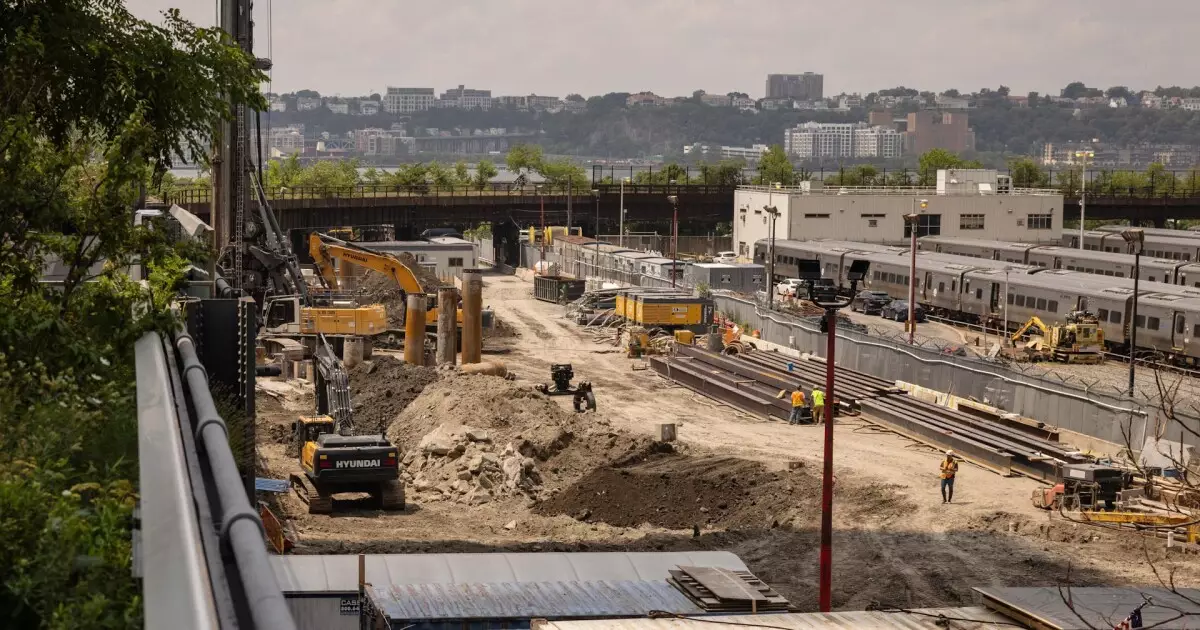The Gateway Development Commission (GDC) stands on the brink of a significant achievement with the imminent finalization of its last funding grant for the Hudson Tunnel Project, expected by the end of this month. Chief Financial Officer, Pat McCoy, has emphasized that this project, receiving a remarkable $3.8 billion grant from the Federal Railroad Administration, will solidify the necessary financial backing to bring this monumental undertaking to fruition. In a recent discussion with the Municipal Analysts Group of New York, McCoy outlined the intricacies of the funding and construction processes, underscoring the project’s pressing nature as delineated by President Biden himself.
With a construction budget estimated at an astounding $16.3 billion, the Hudson Tunnel Project aims to address a crucial section of the Northeast rail corridor. The existing tunnel, which has been in operation for over a century, is plagued by constraints that exacerbate the strain on intercity and commuter rail services. The new infrastructure will not only enhance operational capacity with two additional sets of tracks but also rehabilitate aging facilities to meet modern standards and operational demands.
Undeniably, large-scale infrastructure development is fraught with challenges. McCoy candidly noted that complexity is an inherent aspect of any construction projects, likening the undertaking to domestic renovations that inevitably face unexpected issues. The GDC has navigated a convoluted path to secure funding, with McCoy describing the endeavor to acquire federal grants as “arduous and complex.” This transparency reflects the realities of public sector projects and the multifaceted dynamics that influence their progress and timeline.
The GDC’s strategy has included a diverse funding mix, comprising not only federal grants but also loans intended to provide financial flexibility. A substantial $6.88 billion full funding grant agreement exemplifies the extent of federal investment, marking it as the largest federal transportation grant to date. Through meticulous planning, the GDC aims to mitigate potential cost overruns by collaborating closely with stakeholders, including the states of New York and New Jersey and Amtrak. This collaborative framework is crucial, given the political volatility surrounding public projects that can easily derail or delay initiatives.
One of the most formidable challenges in the Gateway Project is the requirement for cooperation across various state and federal agencies. McCoy’s experience with New York’s Metropolitan Transportation Authority equips him with a unique perspective on navigating bureaucratic hurdles effectively. The GDC must coordinate with six separate entities to accomplish its goals, a process that demands constant communication and careful management of resources.
Currently, the project encompasses several construction initiatives. This flexibility ensures ongoing progress, even while specific segments are still in development. One such effort, the Tonnelle Avenue Bridge and Utility Relocation Project, aims to create infrastructure above the future tunnel right-of-way, a strategic move that underscores the GDC’s foresight in project planning.
Despite the GDC’s current momentum, the political landscape remains unpredictable. The project previously found itself stalled during the Trump administration, which posed existential threats to its financial viability. However, McCoy remains optimistic about the current administration’s support. He reiterated the importance of demonstrating to stakeholders that funding is secure and that the project is critical for the future of transportation infrastructure in the region.
“It’s about finding the right opportunity at the right time,” McCoy stated, highlighting the urgency that now drives the GDC forward. Navigating relationships with federal and state agencies, while also ensuring that local concerns are addressed, is vital for maintaining a stable path to completion.
As the GDC progresses, the next phases promise further advancements in tunnel construction and operational infrastructure. Preparing to initiate tunnel boring for the Hudson section will signal a key milestone, with expectations set for initial completion in 2027. The planned construction of a concrete casing for upcoming tunnels in New York’s Penn Station signifies a proactive strategy to address potential logistical challenges ahead.
With a streamlined team of approximately 50 dedicated staff, the GDC may lack the sheer manpower of larger entities like the MTA; however, this smaller scale allows for more intimate collaboration among partners. Every decision is tailored through cooperative discussions, essential in overcoming the multifaceted challenges faced by the project.
The Gateway Tunnel Project stands as a testament to the need for modernized infrastructure and the collaborative spirit needed to realize such ambitious endeavors. McCoy’s leadership reflects an unwavering commitment to the project’s success, ensuring that the future of rail travel across the Northeast will be both safer and more efficient.

